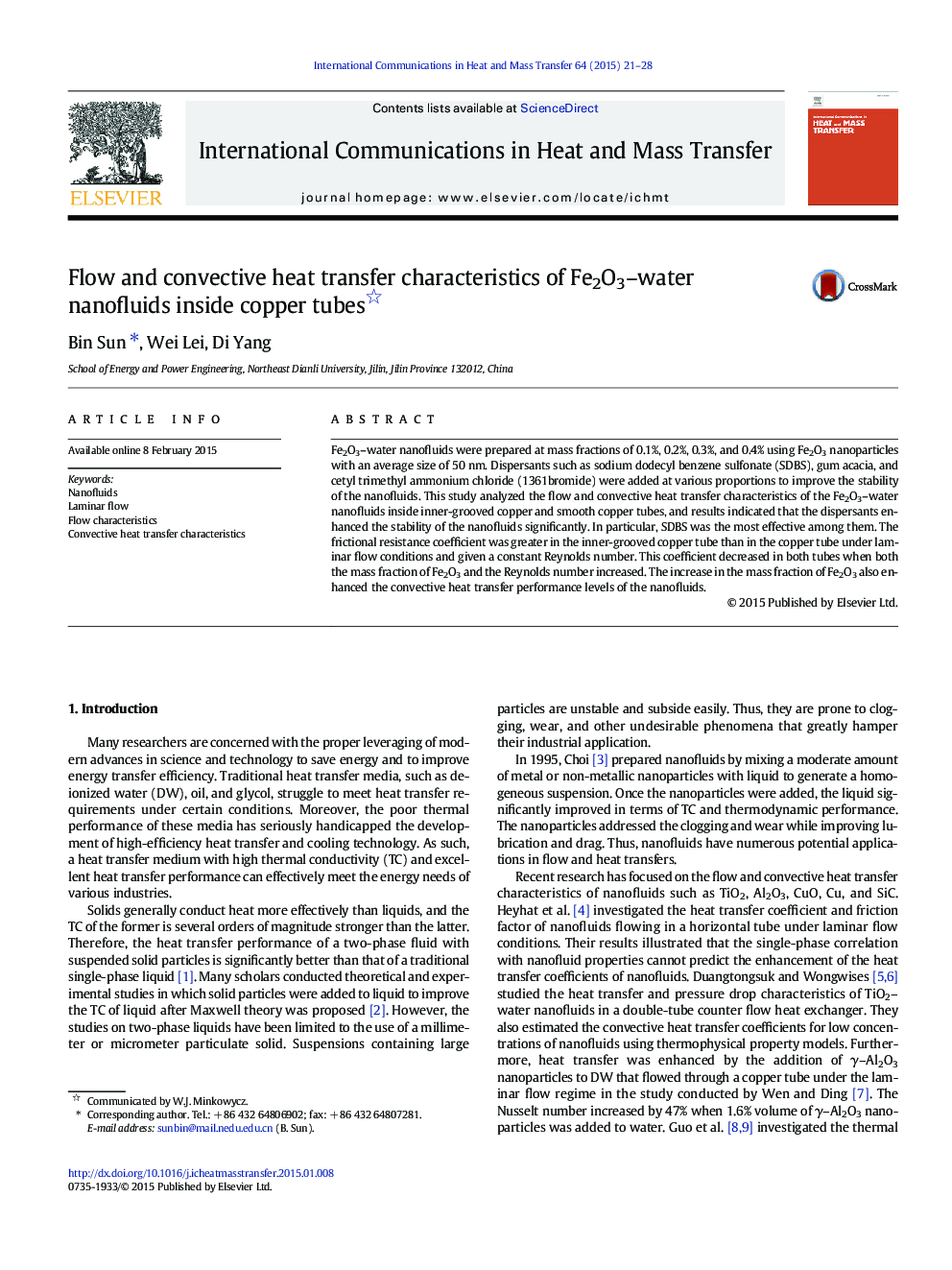| Article ID | Journal | Published Year | Pages | File Type |
|---|---|---|---|---|
| 653046 | International Communications in Heat and Mass Transfer | 2015 | 8 Pages |
Abstract
Fe2O3-water nanofluids were prepared at mass fractions of 0.1%, 0.2%, 0.3%, and 0.4% using Fe2O3 nanoparticles with an average size of 50Â nm. Dispersants such as sodium dodecyl benzene sulfonate (SDBS), gum acacia, and cetyl trimethyl ammonium chloride (1361bromide) were added at various proportions to improve the stability of the nanofluids. This study analyzed the flow and convective heat transfer characteristics of the Fe2O3-water nanofluids inside inner-grooved copper and smooth copper tubes, and results indicated that the dispersants enhanced the stability of the nanofluids significantly. In particular, SDBS was the most effective among them. The frictional resistance coefficient was greater in the inner-grooved copper tube than in the copper tube under laminar flow conditions and given a constant Reynolds number. This coefficient decreased in both tubes when both the mass fraction of Fe2O3 and the Reynolds number increased. The increase in the mass fraction of Fe2O3 also enhanced the convective heat transfer performance levels of the nanofluids.
Related Topics
Physical Sciences and Engineering
Chemical Engineering
Fluid Flow and Transfer Processes
Authors
Bin Sun, Wei Lei, Di Yang,
